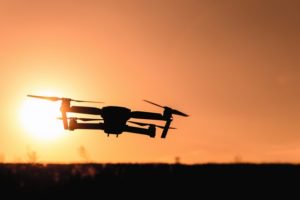Yesterday, DJI, announced that they would equip all drones with AirSense ADS-B receivers as of 2020. (You can read about that here). The announcement is just part of DJI’s plan to equip hardware with technology-based safety features in order to address the needs of regulators – and minimize the need for new and more stringent regulations.
As the world’s largest drone manufacturer, providing by even the most conservative estimate more than 60% of the drones currently in the air, it’s a meaningful plan for DJI to announce. The details are laid out in their whitepaper, Elevating Safety: with the tag line, “DJI’s plan for data-based, real-world solutions to maximize safety,encourage innovation, minimize conflicts and help society.”
But there’s the problem: no engineer, scientist, business or regulator will admit to making decisions without data. When it comes to drone conflict data, however – those incidents when the pilot of a manned aircraft or a member of the public reports interference or accident from a drone – the data, it seems, is problematic. In one section of the whitepaper devoted to the question of reliable data, DJI says that the currently available information vastly overstates actual safety problems, sometimes including what are merely unverified “drone sightings.”
“We sought to analyze actual data about unsafe drone use. Unfortunately, almost all of the data available turned out to be unreliable,” says the whitepaper. “Unreliable” is an understatement: the deep dive into the data of reported drone incidents shows massive overreporting, guesswork, and a lack of investigative process.
“The FAA began systematically tabulating reports of drone incidents in 2014, and made those reports public the following year with a press release that re-ferred to them as ‘close calls,’” says the whitepaper. “The Academy of Model Aeronautics (AMA) analyzed all 764 records in an initial release of FAA data and concluded that just 27 of them could be a ‘near miss.’”
Even the U.S. government acknowledges that the data is doubtful. “In May 2018, the U.S. Government Accountability Office reviewed the reported incidents, interviewed FAA officials and concluded that ‘the extent that these reports represent actual incidents of unsafe use is unclear,’” says the paper.
The problem isn’t limited to the U.S. European agencies have similar problems and similarly unclear data. The reasons are many and varied: from media hype, misheard calls, sightings that may have been of legitimate drone flights, and even the limitations of the human eye. “One study of human visual acuity concluded aircraft pilots had less than a 10 percent chance of spotting a small drone nearby, even in ideal conditions,” the paper points out.
The problem of faulty data is clear: regulators use the data to form regulations which impact the drone industry significantly. And in addition to implementing safety solutions that represent the most likely potential risks, DJI is calling on the aviation industry to help improve the available data – and eliminate the guesswork when it comes to drone safety and regulation:
“It is long past time for the traditional and drone aviation communities to develop common and accepted practices for collecting, analyzing and acting onreports of drone interference in the skies,” says the paper. “…Industry groups must develop workable science-based standards for reporting drone incidents, with rigorous methods for obtaining detailed information while filtering out claims that have little or no bearing on safety.”
“This will require a collaborative effort between everyone with a stake in the safety of the skies, including drone manufacturers and pilots, airports and airlines, professional and private pilots, and many others.”
Miriam McNabb is the Editor-in-Chief of DRONELIFE and CEO of JobForDrones, a professional drone services marketplace, and a fascinated observer of the emerging drone industry and the regulatory environment for drones. Miriam has a degree from the University of Chicago and over 20 years of experience in high tech sales and marketing for new technologies.
Email Miriam
TWITTER:@spaldingbarker
Subscribe to DroneLife here.
https://dronelife.com/2019/05/23/djis-quest-for-real-drone-data-why-every-pilot-should-care/
 Unmanned Aerial Vehicle The latest drone news
Unmanned Aerial Vehicle The latest drone news




